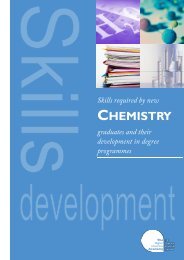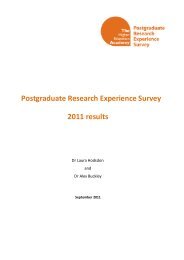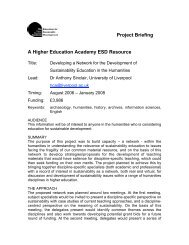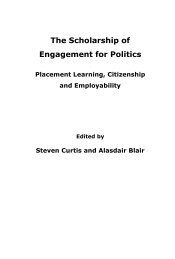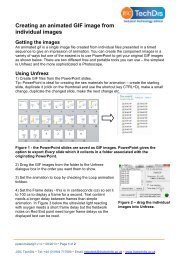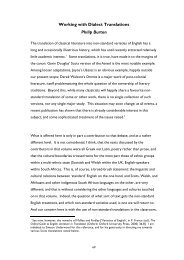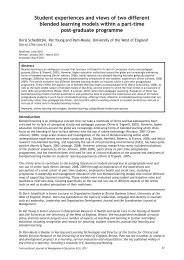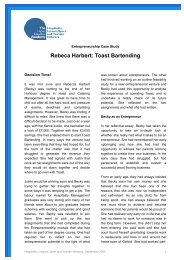Embedding Building Information Modelling (BIM) within the taught ...
Embedding Building Information Modelling (BIM) within the taught ...
Embedding Building Information Modelling (BIM) within the taught ...
Create successful ePaper yourself
Turn your PDF publications into a flip-book with our unique Google optimized e-Paper software.
Appendix 5: Initial <strong>BIM</strong> Learning Outcomes Framework<br />
Extract for illustration purposes only<br />
STRATEGIC<br />
Overview<br />
In relation to each of <strong>the</strong> learning outcomes below, as a result<br />
of following this course, individuals will be expected to:<br />
O1<br />
O2<br />
What is <strong>BIM</strong><br />
Understand <strong>the</strong> principles of <strong>Building</strong> <strong>Information</strong> <strong>Modelling</strong> and its application to <strong>the</strong><br />
whole life inter-disciplinary design, construction and use of building and infrastructure<br />
developments<br />
<strong>BIM</strong> value proposition (context relevant e.g., client and contractor)<br />
Understand <strong>the</strong> value proposition that <strong>BIM</strong> offers enabling adopters to more efficiently:<br />
Identify and evaluate stakeholder, user, community and sustainability project requirements<br />
Prepare project briefs and development programmes<br />
Assess and manage project risks and opportunities<br />
Prepare and present project design recommendations<br />
Assess, plan, estimate and control proposed development energy, whole life and capital<br />
costs<br />
etc<br />
MANAGEMENT<br />
Overview<br />
In relation to each of <strong>the</strong> learning outcomes below, as a result<br />
of following this course, individuals will be expected to:<br />
O1<br />
What is <strong>BIM</strong><br />
Understand <strong>the</strong> principles of building information modelling and its application to <strong>the</strong><br />
whole life inter-disciplinary design, construction and use of building and infrastructure<br />
developments<br />
Acquiring internal resources<br />
A1 Developing <strong>the</strong> business case, investment and return model<br />
Understand <strong>the</strong> business case, investment and return model for <strong>BIM</strong> in order to be able to:<br />
Evaluate <strong>the</strong> benefits and risks of partnership and strategic sourcing<br />
Identify and resource <strong>the</strong> research and development of new products and services to meet<br />
market needs<br />
Identify opportunities to maintain and increase revenue<br />
Establish, implement and improve a business plan<br />
Allocate organisational budgets for projects<br />
Manage physical resources<br />
Manage business processes and improve performance<br />
A2<br />
Organisation and Project applications, and benefits of <strong>BIM</strong><br />
Understand <strong>the</strong> organisational and project applications and benefits of <strong>BIM</strong> in order to be<br />
able to:<br />
Identify and evaluate stakeholder, user, community and sustainability project requirements<br />
Confirm project energy efficiency and carbon minimisation requirements and strategies<br />
Establish arrangements for procurement and management of sustainable projects<br />
Prepare project briefs and development programmes<br />
22



